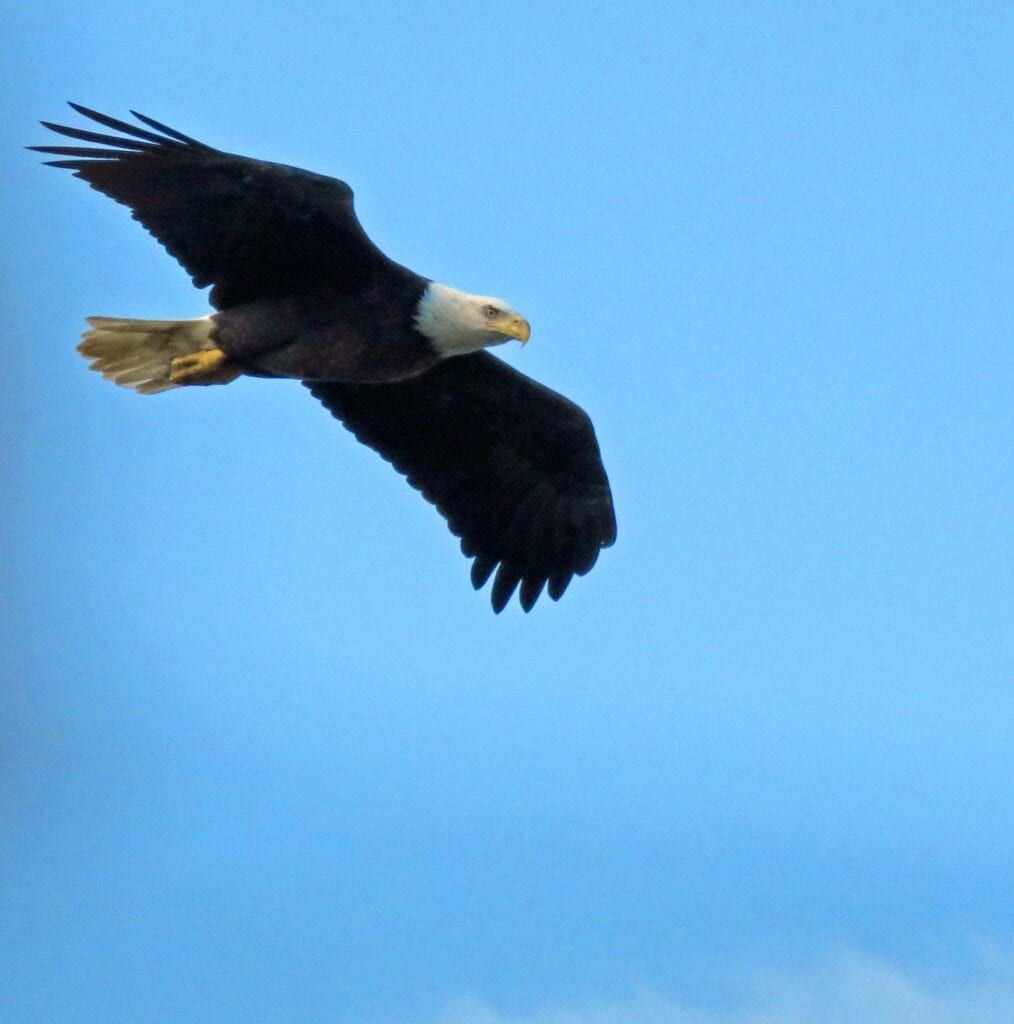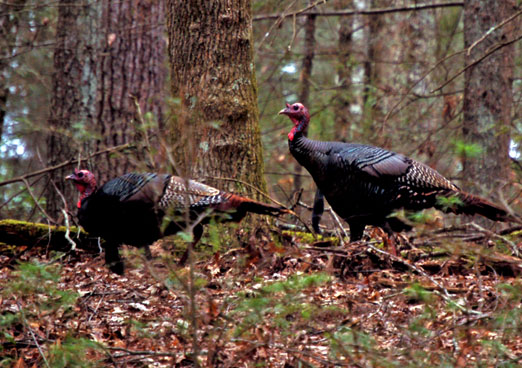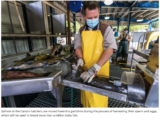
A couple of wild turkeys spotted in the Oak Mountain State Park near Birmingham, Alabama: Glynn Wilson
By Glynn Wilson –
Beginning around the time of the first Thanksgiving harvest feast in North America in the 1620s, European settlers almost wiped out native wild turkeys on the continent by the early-20th century.
Conservation efforts since the 1970s, however, have been successful, and the population has made a comeback to an estimated 7 million birds in 49 states.
Without regulations for 300 years, hunters could shoot and trap as many turkeys as they liked. Forest habitat was cut down for farmland and heating fuel, and without trees, turkeys have nowhere to roost. So they began to disappear.
By the early 1900s, there were only about 30,000 wild turkeys left in the whole country, according to conservation surveys. With regulations passed in the early 1970s, conservationists figured out how to protect the birds and bring them back from the brink of extinction. This is a great example of why we need federal government regulations.
In the late 1700s, when the United States declared Independence from Great Britain and successfully fought the Revolutionary War and wrote a Constitution, Benjamin Franklin advocated for the wild turkey to be declared the national bird. He lost that debate to those who wanted to name the bald eagle.
“For my own part I wish the bald eagle had not been chosen the representative of our country,” Franklin wrote at the time. “He is a bird of bad moral character. He does not get his living honestly. You may have seen him perched on some dead tree near the river, where, too lazy to fish for himself, he watches the labour of the fishing hawk; and when that diligent bird has at length taken a fish, and is bearing it to his nest for the support of his mate and young ones, the bald eagle pursues him and takes it from him.”

An American bald eagle, along the cliffs over the Potomac River leading to the Chesapeake Bay in Virginia: Glynn Wilson
“For the truth, the turkey is in comparison a much more respectable bird, and withal a true original native of America,” Franklin said. “He is besides, though a little vain and silly, a bird of courage, and would not hesitate to attack a grenadier of the British Guards who should presume to invade his farm yard with a red coat on.”
Now they exist in every state but Alaska, and are considered one of the great success stories of wildlife management. State conservation offices get calls about flocks of wild turkeys these days in people’s backyards, in front of office buildings, even holding up rush hour traffic near interstate highways, even airport runways.
Turkey hunting is still allowed in most states, usually in the spring during mating season, when only male turkeys can be shot since the females are breeding. There are so many turkeys out there now that some states have added a fall hunting season.
The American wild turkey bears little resemblance to its distant cousin, the Butterball, which is what most Americans cook for Thanksgiving. Domesticated turkeys have been bred to have such humongous breasts that they can barely stand up, let alone get off the ground to run and fly.
Since domesticated turkeys never move, their legs and thighs don’t get overly muscled like those of the wild turkey, and remain fat and juicy. Because a wild bird’s legs are sinewy from all that exercise, the breast is the best part, but it has a more intense flavor than the supermarket brand.
The ancestors of most supermarket turkeys are from Mexico. The Spanish took them to Europe in the 1500s, and the birds became popular all over the continent.
North Carolina
In North Carolina, the numbers of wild turkeys declined to an estimated 2,200 birds by the 1970s, when restrictions were placed on hunting. Restoration efforts were begun in the 1940s with wild-trapping and purchase of wild-trapped birds from other states, carefully relocated throughout North Carolina.
The effort has yielded an estimated current population of 130,000 birds across the state.
Their appeal as food for humans isn’t the only danger to turkeys. They have a number of predators, including snakes, skunks, opossums, raccoons, coyotes, foxes, dogs, crows, hawks and owls.
Habitat fragmentation from development and road building also presents problems for wild turkey populations, who fare best in woodsy areas with plenty of vegetation and water. They nest at night in leafy beds at the foot of trees or under shrubs.
Turkeys need a good supply of fruits, nuts, grains, grasses, leafy greens, insects and invertebrates (worms, snails, spiders). Studies have found that they aren’t too particular about what they eat, counting more than 600 plant and insect species that they will consume. That makes the Piedmont and the mountains of North Carolina especially appealing to them.
They are in the coastal plain, too, with the Camp Lejeune Marine Base and the Roanoke River basin being rich in wild turkeys.
They have excellent eyesight and hearing, so they can be difficult to spot for photography or hunting.

A couple of wild turkeys in Cades Cove in the Great Smoky Mountains National Park in Tennessee: Glynn Wilson













